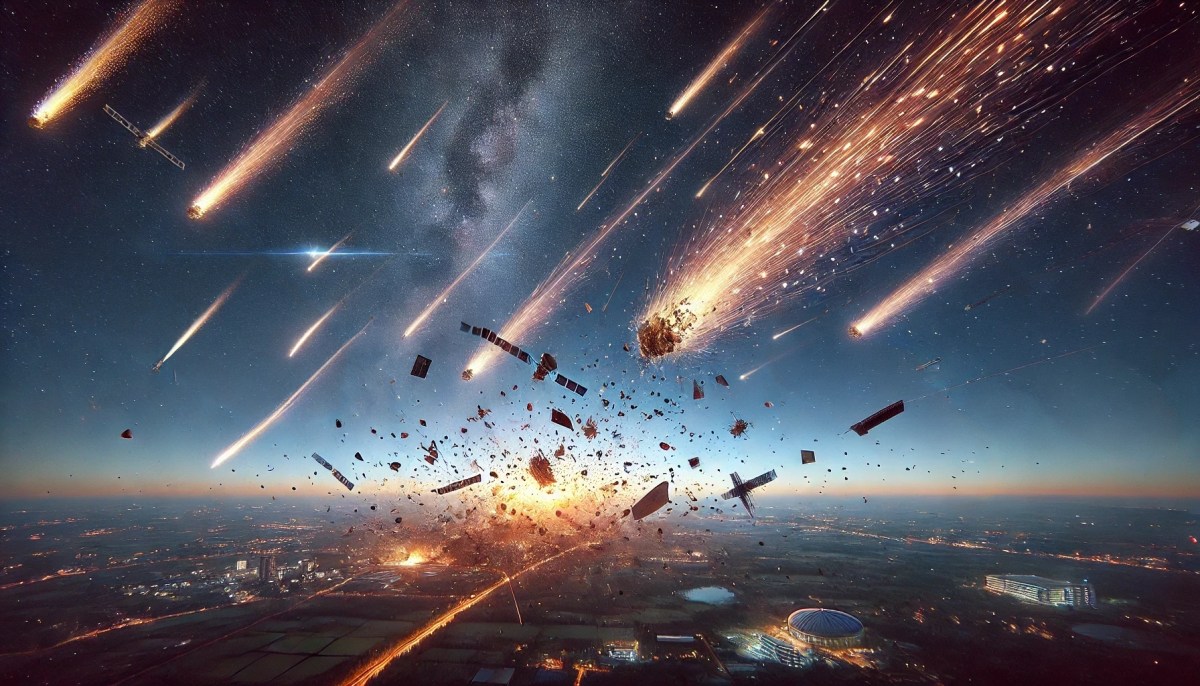On June 20, House Intelligence Committee Chairman Mike Turner (R-Ohio) warned that the United States is on the brink of a “Cuban Missile Crisis in space” if Russia operationalizes a nuclear-armed satellite weapon. In reality, it could be even more dangerous. Today’s Russia is more paranoid and desperate than the Soviet Union was in 1962. In 2024, the U.S. has more to lose and fewer options to counter Russia’s move. In this so-called Cuban Missile Crisis in space, the U.S. must carefully balance deterring a reckless Russia while avoiding actions that could provoke catastrophic consequences.
By considering the differences between these scenarios, we can see how the U.S. has fewer good options and Russia is more dangerous.
Difference #1: Russian desperation
May 1960: The Soviet Union, fearing the U.S. would try to invade Cuba and overthrow Fidel Castro, placed medium and intermediate-range nuclear missiles to defend the country.
The Soviet Union in the 1960s was a global superpower, and saw the U.S. as a rising power and a threat to Soviet hegemony. Placing missiles in Cuba was a defensive move. 2024 Russia is a declining power seeking to change the status-quo. If Russia were to place a nuclear weapon in space, it would be an offensive move to target U.S. satellite systems and threaten the U.S.-led order. Russia in 1962 was a bear guarding its territory with incentive to protect the forest. The Russian bear in 2024 is wounded and starving. It has little to lose and is willing to do anything to survive.
Difference #2: U.S. credibility
October 22, 1962: In a dramatic 18-minute television speech, President John F. Kennedy shocked Americans by revealing “unmistakable evidence” of the missile threat in Cuba. He announced that the U.S. would prevent ships carrying weapons from reaching Cuba, while demanding that the Soviets withdraw their missiles.
In the 1960s, the U.S. held a strategic missile advantage that allowed Kennedy to threaten the Soviet Union with a game of chicken. Today, the U.S. has a strategic advantage on Earth, but not in space. Financial constraints crippled Russia’s space endeavors, leading to fewer payload launches, and the U.S. now has a major lead in space. With more to defend and less to attack, the U.S. must carefully moderate its actions to avoid a catastrophic Russian response.
Difference #3: U.S. options
October 23, 1962: U.S. Ambassador Adlai Stevenson explained the matter to the U.N. Security Council as U.S. ships moved into position around Cuba.
President John F. Kennedy established a blockade of Cuba and engaged diplomatically with the Soviet Premier. Eventually, the two reached a compromise: the U.S. withdrew missiles from Turkey and promised not to invade Cuba, and the Soviet Union dismantled the missiles on Cuba. Unlike the Port of Havana, however, you cannot blockade a spaceport.
Barring a risky interception or a strike on the launch facility, a nuclear co-orbital satellite will reach its designated orbit. Kennedy considered a range of options, from doing nothing (ineffective at best, dangerous at worst), to a full scale invasion of Cuba (most risky), to a naval blockade (the least bad option). If Russia launches its nuclear armed satellites, 2024 U.S. will have fewer options at its disposal than 1962 U.S. had.
The ineffective options (ignore the Soviet missiles in Cuba)
Do nothing: Russia is a declining power desperate to regain its lost status. But Russia’s decline cannot be solved by threatening U.S. space assets. If the U.S. appeases Russia, it would enter a never-ending cycle of bad behavior and appeasement.
President-to-President diplomacy: Given the war in Ukraine and presidential elections in November, direct diplomacy at this level is likely off the table.
Economic sanctions: Russia probably views sanctions as a nuisance, while it sees its geopolitical position as an existential crisis. At best, sanctions will have little to no effect. At worst, they will exacerbate Russia’s decline, potentially leading to even more reckless behavior.
The riskiest option (a full invasion of Cuba)
Destroy the satellite in orbit: The U.S. likely lacks the offensive cyber capabilities to neutralize the satellite in orbit. A direct ascent anti-satellite attack is possible but incredibly risky. Like the Soviets would retaliate facing a U.S. invasion, facing a “use it or lose it” scenario, Russia might decide to set off the weapon rather than watch it be destroyed.
The least bad options (impose a naval blockade around Cuba)
Low level diplomacy: The administration is currently reaching out to Moscow to negotiate an off-ramp prior to launching the satellite. Russia is a declining power, so time is on the U.S.’s side.
International diplomacy: China, India, and the United Kingdom all have significant satellites in the same orbit as Russia’s test satellite. Presenting a united front may deter Russia where a single actor cannot.
This is not your father’s Cuban Missile Crisis. Today’s Russia, a declining power with existential anxieties, is more unpredictable and willing to take risks that could destabilize global space assets. The U.S. faces a more constrained set of responses compared to the bold moves available during the Cold War. Ultimately, the U.S. must prevent a catastrophic escalation while preserving the stability and security of space, an increasingly vital domain for all of humanity.
Daniel Duchaine is a Fellow at the Center for Space Governance and the Space Governance and Power Fellow at Al Fusaic. He is currently a Government Relations Associate at Applied Research Associates (ARA). The views expressed here are his alone and do not reflect those of Applied Research Associates.
